Classes can be a fantastic opportunity for professional coaches to help more “regular” people and earn more money in the most time-efficient way. Let’s be honest, we love what we do, but we still need to pay the rent!
Classes can be rewarding for all involved, especially when you run them in your own gym and with people who are invested in a plan to move well, get strong, and look awesome. But these tend to be people who are either selected by you, because you hunted them out, or who sought you out for the product or message you embody.
Many young trainers don’t have the benefit of such an advantageous set up. They may be working in a large chain gym and be expected to instruct eight class hours a week as a part of their job or they may have just started out at a studio and taken on freelance group classes to earn extra money. In both scenarios, they may not have the benefit of having any control over who shows up to their classes.
What these trainers need is a class template they can adjust the minute the last person comes through the door (or even mid-class). A template that works regardless of the experience and ability level of class attendees. A proven plan that allows them to stop worrying about “where the class is going next” and allows them to focus on coaching movement and strength. If a class template like that is what you’re after, then keep reading.
Group Exercise Class = You Get What You Get
When I gave up my life as an engineer in search of the “big bucks” teaching fitness I started out teaching group kettlebell classes in various chain gyms around the city. This meant I had no control over who (or how many) walked through the door.
Sometimes I had two or three people, other times I had to deal with thirty-plus students and not enough kettlebells. Sometimes I had people who were clearly broken and wouldn’t admit it, and sometimes I had people who didn’t want to be coached. Even though I did not have full control over the class environment, I still had control over my integrity and my refusal to allow poor technique to be executed repeatedly in my presence. (I also refused to structure my class around entertaining people, as I’m not a day-care nurse and this isn’t a kindergarten.)
All this put together meant I needed to have class progressions that I could:
- Pull out of my hat at a moment’s notice
- Change on the fly if something wasn’t working
- Scale down for the unconditioned beginner
- Scale up for the experienced trainee
Plus, the classes needed to stick to my personal philosophy (move well, lift heavy, be awesome) and they had to be fun (if they don’t come back, you don’t get paid!).
Doing the Job You’re Paid For
When leading group classes for a gym, there has to be a degree of swallowing your pride. You are not there to provide a periodized program. You are not there to instill perfect form. You are there to provide thirty to sixty minutes of exercise.
What you can do is to subtly preach the word that “strength is a skill.” Given that, here are my two ironclad rules—the things that are non-negotiable:
- Nobody does anything stupid or dangerous. I used to joke to my classes that we would continue to practice light kettlebell deadlifts as a group until everyone could do it to my satisfaction. The complication with this rule is that you cannot call people out to the front of a (chain gym) group exercise class and fix them, as this is a sure-fire way to get called into the manager’s office. You need to either address any specific issues anonymously to the whole group or surreptitiously coach the individual during a group drill/practice.
- Nobody progresses beyond competence. In order to follow this rule, you need to be able to tell people to do the regressed variation or to use a lighter bell. People who do group exercise classes in chain gyms are not used to this. Novice and beginner coaches can sometimes be apprehensive about telling and end up asking. You need to be in control of your group—act like you own the place.
Men don’t tend to come to group classes as much as women, which leads to interesting scenarios when men do show up. When novice men come into a class, they tend to look at what the strongest women is using and try to go heavier. This is a mistake. Especially if the woman in question has been going to class three times a week for four years and can use the 16kg kettlebell for multiple rounds on the Deep Six (which I advise all group instructors to investigate for their intermediate and advanced groups).
The moral of the story is you must be prepared to stop people from doing something they don’t yet realize is foolish or dangerous. Teach people that progressions can be measured in four-kilo (and sometimes two-kilo) jumps. Class-goers need to be educated and encouraged to level up on exercises, otherwise they will always do what they’ve always done.
For a lot of people, group exercise class is less about fitness and more about socializing. We need to strike the balance between the need for social interaction and physical activity. This is where introducing some elements of friendly competition can be helpful in getting them to move up to that next-sized kettlebell.
This also means if you have mixed ability groups, the experienced people should be using heavier bells. If that’s not possible, then they should do a harder, more technical exercise. If the plan calls for swings, then the experienced trainees should do snatches or double-bell swings. Encourage these class members to set an example for newer students.
The Group Exercise Class Breakdown
The class needs to be broken into three or four parts, depending on who comes through your door:
- Mobility warm-up and assessment
- Teaching progression
- Workout
- Stretching
If you have a mostly novice group, the teaching progression section can actually become the workout.
Mobility and Assessment
You need a mobility warm-up that allows you to surreptitiously assess who you’ve got in front of you while also ticking all of the joint mobility boxes. Fortunately, through the wider StrongFirst community we have many choices:
- SFG Level I Mobility Complex (straight from the SFG Level I manual)
- Flexible Steel Mobility Complex
- GroundForce Method Exploration
- ‘Naked’ Kalos Sthenos Turkish Get-up
- Simple & Sinister Warm-up
The first two are the simplest to do and are the best to do with novice groups as they are “copy and do” and the movements are fairly simple (this does not mean easy). The GroundForce Method and Kalos Stenos Turkish Get-up are great for intermediate groups who have invested some time with you. They are more complicated and require some time to learn. They do, however, provide you more screening information than the first two options. The approach I take is to slowly insert elements of them into warm-ups and workouts over a long term and then one day bring it all together.
The Simple & Sinister warm-up is an evolution on the Pavel classic Program Minimum and represents the shortest possible warm up that ticks the boxes. It’s my go-to choice for thirty-minute long classes. It’s a simple and easy-to-follow, yet thorough warm-up.
Teaching Progressions
The aim of the teaching progression laid out below is to provide a further warm-up that teaches the technical elements needed for the swing, goblet squat, push-up and birddog/crawl, while also preparing for a workout containing those exercises. For novice/beginner groups, this segment can on its own be the workout.
- Hinge drills into pop and chop (a.k.a. the Naked Swing)
- Plank position (Yin style)
- Deadlifts
- Plank position (Yang/hard style)
- Deadlifts (bring the plank to the deadlift)
- Plank position (Yang)
- Hike pass
- Push-up position plank (Yang)
- Deadstop swing
- Negative hard style push-up (3-5 practices)
- Swing practice (6-10 reps)
- Negative hard style push-up or hard style push-up (find your 80%)
- Swing practice (6-10 reps)
- Rocking squat (checking for squat mobility)
- Swing practice
- Goblet squat practice (3 reps)
- Swing practice
- Goblet squat practice
- Swing practice
- Bird dog (left and right)
- Swing practice
- Crawling 1 (baby crawl or creeping)
- Swing practice
- Crawling 2 (find your 80%)
- Swing practice
Encourage the students to never go beyond 70 to 80% of what they can do. Failure is not an option.
From here, you have enough to work with for an actual workout. Alternatively, with a very novice group we can stay in this skill practice format and skip the workout segment (below).
Workout 1: The Core 4
I call this one the Core 4. The question always arises as to whether I named this because the four exercises are great for strengthening the torso or whether the four exercises form a core foundation from which to build upon. The answer is “yes.”
The workout is a short circuit consisting of four exercises plus additional mobility drills to be performed as active recovery. The exercises are:
- Two-handed swings x 10
- Goblet squat x 3
- Push-up variation x 3-5 reps
- Crawl or bird dog variation
- Mobility drill (or diaphragmatic breathing practice)
Repeat for 10 to 15 sets
For the push-ups, those three to five repetitions should represent around the student’s 60-70% repetition maximum in that variation. If a novice can do five proper push-ups, then that puts them at about three push-ups per round in the circuit. If we elevated their hands and this took them to eight push-ups, then in the circuit we’d have them do five.
Stay away from variations where your student’s repetition maximum is less than five, as the cumulative effect over the circuit will either mean they need to drop repetitions in subsequent rounds or sacrifice technique. There’s no problem with the first few rounds feeling easy.
This workout can be biased towards different goals depending on the group. It can even be used with mixed experience groups, with more experienced students using heavier loads, performing more repetitions, or performing more demanding drills.
It can be tailored using the following parameters:
- Skill: Moderate load/leverage, medium repetitions and many sets
- Strength: Heavy load/leverage, low repetitions and moderate sets
- Metabolic HIIT: Relatively light load/leverage, many repetitions and many sets
A higher skill version to be done in a mixed group:
- One-handed swing, snatch, or double kettlebell swing/snatch (see below)
- Single kettlebell racked squat or double kettlebell front squat
- Push-up variation (this could be regressed versions of the one-armed or handstand)
- Crawl (see below)
- Mobility drill
Repeat for 8 to 12 sets
If using snatches in a group where there are students also using swings, use lower reps for the snatch or you’ll have dead time in your class where the swingers are waiting for the snatchers. 6 snatches per 10 swings is a good general rule for groups. Having the group wait in the rack position to squat to your command is a good way of keeping the class together.
If advanced students are doing regressions of the one-armed and handstand push-ups, I would have them do easy variations of the crawls so as to not overwork the shoulders and allow for some extra core rest.
The mobility drills I like to use are:
- Rocking squat/frog
- Birddog variations
- Brettzels or arm sweeps
- TGU armbar or bent armbar
- Kettlebell pull overs
- Naked Turkish get-up drills
- Naked windmill
During the mobility drills, you can have an eye towards developing skills for more advanced exercises. The above list develops a lot of the skill and attributes for the get-up, bent press, and windmill.
Workout 2: Variations on a Theme
BYOB (Bring your own ‘Bell) Workout
- Swing
- Squat
- Carry to next location
Repeat for 10 to 15 sets
Carries could include farmer’s carry (two kettlebells), suitcase (one kettlebell), racked (single or double), and overhead. Here the carries replace the push-ups and crawls, yet do a similar function in developing an alive core loading and strengthening of the shoulder complex, especially in the racked and waiter carries.
Example: Level 1
Example: Level 3
Example: Level 5
Workout 3: Circle Variations
Make a large circle of different weight kettlebells, everyone begins by performing the swings together for safety reasons, then follows the sequence:
- Swings
- Goblet squats
- Push-up variation
- Crawl to the center of the circle
- Perform a mobility drill as a group
- Walk back to the next kettlebell in the circle (move clockwise/to your left)
With the above examples to use as a temple, it is possible to create many different workouts using “only” swing variations, squats, push-ups, crawls, and mobility drills. You can even cycle through those three workouts every session for many weeks or months depending on the regularity of your class. You would be developing a solid base for all of your students to work from and these workouts will help you do that.
Group Exercise Over the Longer Term
Once around two-thirds of your class is technically competent, a class generally becomes easier to run, even if the other third is completely made up of novices and beginners. This happens in part due to not having to correct so many people, and also because if you surround people with competence, then beginners tend to live up to the example given by the majority. So a good coaching strategy would be to integrate beginners with experienced people—don’t let them hide at the back!
These workouts may look simple (they are) and easy (they aren’t). A lot of my more experienced students have grown to jokingly despise days where it is “mostly noobs,” as they know they will need to level up to the heavier kettlebells to let the newcomers use the lighter weights—and therefore the “simple” workouts become a real challenge.
Bonus Rule 1
The class isn’t about you and you’re not a cheerleader. You’re a coach. Once the group instruction is out of the way and people know what they’re doing, it’s time for you to walk the room, move around, and watch people from different angles.
I’m not saying never lead a workout from the front, but you don’t need to do that all the time. You are the leader—that sometimes means you need to lead from the front in a motivational style and sometimes it is good to give the students a show to drive up moral. But most of the time you can lead best by taking an overview and fixing technique problems as and when they arise.
Bonus Rule 2
Years of teaching complex Kali stick-fighting patterns has taught me the value of a mirrored wall. Turn your back on the class and have them follow you through the movement from behind, the mirror is for you to watch them, not for them to watch themselves. Complex asymmetrical movements (like the get-up, windmill, bent press, and some mobility drills) tend to be easier to follow if a student can copy you without have to think about left versus right translation.
So there you have some simple, easy-to-implement ideas for instructing in a less than controllable environment. Stick to your principles, don’t try to entertain the class with made-up exercises, and focus on the fundamentals.
Special thanks to Claire Booth, SFG II, SFL, SFB; Ben Bradbury, SFG, SFL; Paul Lynch, SFG, SFL; and David Szego, SFG, SFL, for their help in making this article possible.
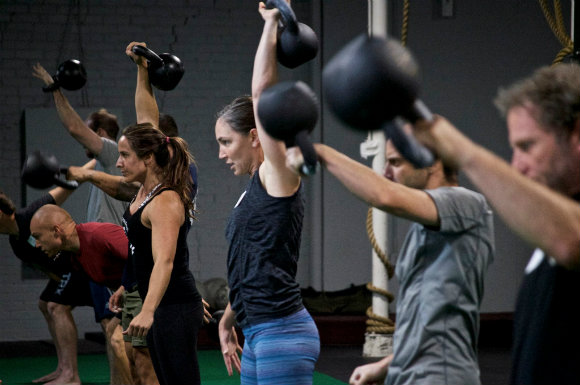
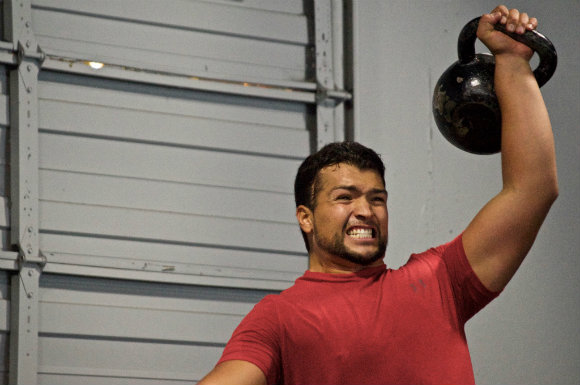
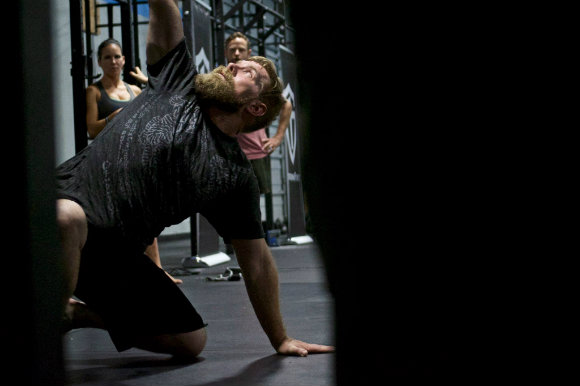
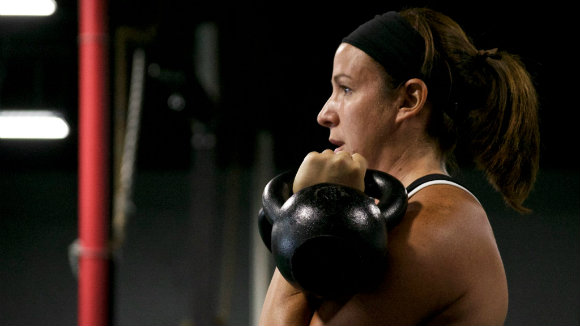
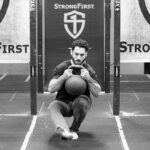
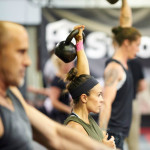
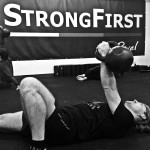



I agree this is excellent. I was just certified as an SFG and this helps me a ton! I am teaching classes to newbies and other KB enthusiasts, and now I really have some great parameters to work with.
Thank you
David Haebler EXOS Oregon
That is one great article!!
Thanks so much for writing and sharing it!!
Tim Bate,
Jamisontown, NSW, Australia
Very comprehensive and full of excellent tips. Thanks Colin.
A very generous article that has true value…
Regards
Colin
Mooloolaba
Australia
Very interesting.
Thanks to everyone involved in the making of this article.